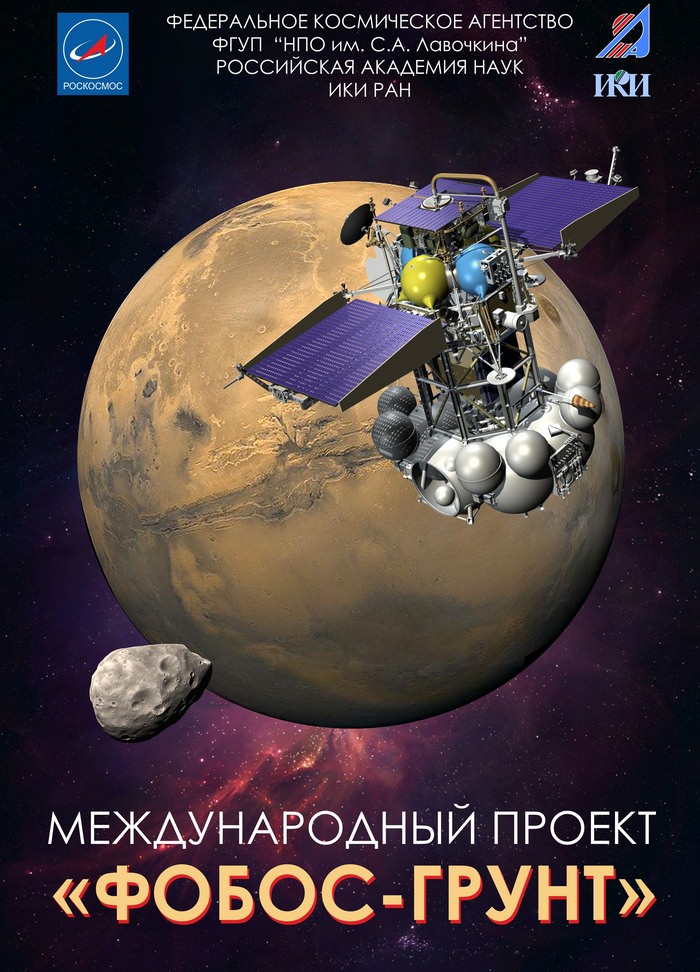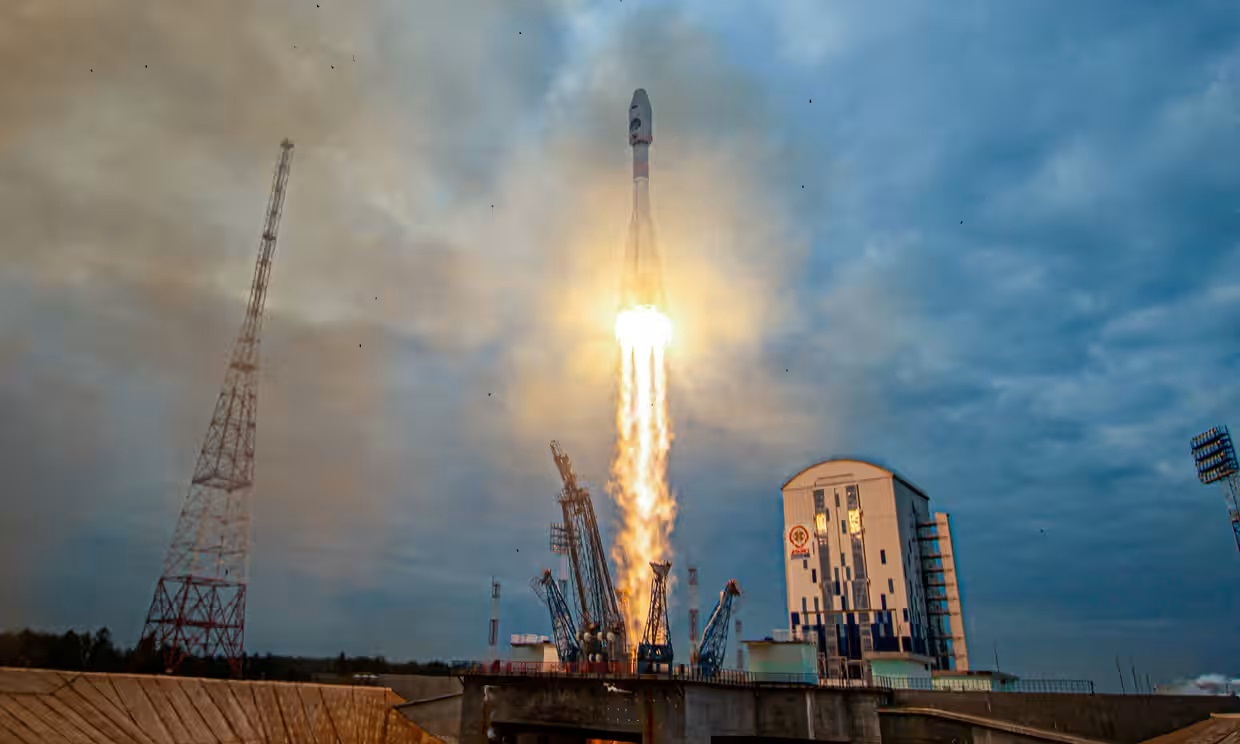On August 10th, 2023, Roscosmos’ Luna-25 mission launched from the Vostochny Cosmodrome atop a Soyuz-2 rocket. This mission was the first lunar mission to launch from Russia since the 1970s and would be the first Russian lander to touch down in the South-Pole Aitken basin. This mission was part of Roscosmos’ partnership with China to develop an International Lunar Research Station (ILRS) in the region by 2030. Unfortunately, Russia announced on Saturday, August 19th, that the lander spun out of control and crashed into the surface.
According to the Roscosmos statement, mission controllers lost contact with the craft at 11:57 AM GMT (07:57 AM EST; 04:57 AM PST) after the craft entered its pre-landing orbit. A soft landing was originally planned for Monday and would have been the first time a non-Soviet mission reached the lunar surface. Originally named the Luna-Glob lander, the first of three that would explore the Moon’s southern polar region, the agency decided to change the name to Luna-25 to establish continuity with the Soviet program. As Roscosmos explained on the mission website:
“[D]uring the operation to transfer to the pre-landing orbit, an abnormal situation occurred that did not allow the maneuver to be performed with the specified parameters. According to the results of the preliminary analysis, due to the deviation of the actual pulse parameters from the calculated ones, the automatic station switched to an off-design orbit and ceased to exist as a result of a collision with the lunar surface.”

Roscosmos also indicated a special inter-departmental commission had been established to investigate the reason for the failure. According to Anatoly Zak, the creator and publisher of RussianSpaceWeb (who has been following the mission and posting regular updates), the flight control systems were rumored to be at fault. As he published on August 20th:
“According to one rumor [that] surfaced on August 20, the Onboard Flight Control System, BKU of the lander mishandled the so-called variable thrust controller (privod regulyatora tyagi), which manages the operation of the propulsion system on Luna-Glob. Around the same time, the [official] Russian media quoted IKI scientist Natan Eismont as saying that [the] problems with the spacecraft had been discovered well before the fatal orbit-lowering maneuver, which would have to be postponed to deal with the problem.”
Zak also related a subsequent statement made by Roscosmos Director General Yuri Borisov earlier today, which was also reported by Russian newspaper Moskovsky Komsomolets and Radio Free Europe. All sources confirm that Borisov announced that an engine failure was to blame after it fired for 127 seconds instead of the planned 84 seconds. The failure is a rather significant blow to the Russian space program, which has experienced several setbacks since the beginning of the war in Ukraine, including the termination of its agreement with the ESA to launch the ExoMars 2022 mission and its planned withdrawal from the International Space Station (ISS).
The mission was also intended to raise Russia’s profile in space since the previous Russian-built mission that went to the Moon was the Luna-24 lander in 1976, nearly 50 years ago. Hoping to pick up where their Soviet counterparts left off, Roscosmos initiated the program in 1999 after two years of delays caused by the Russian financial crisis. By the late 2000s, Russia made significant progress, thanks in part to international cooperation and contribution from JAXA and China. This program also served as a pathfinder for the Phobos-Grunt mission, which failed in 2011 when its upper-stage engines failed to ignite.
Luna-25 was to be followed by two more robotic landers that would explore the South Pole-Aitken Basin and scout locations and resources for the future ILRS – a program created in response to the Artemis Accords. This failure underscores Russia’s decline as a space power since the days of the Space Race and delivered a blow to the country’s space program when it really needed a win. It also comes at a time when Roscosmos is facing a budget crunch thanks to the strain of sanctions and the cost of fighting the largest war in Europe since World War II.

The failure is good news for the India Space Research Organization (ISRO), which has been in competition with Roscosmos to get their Chandrayaan-3 mission to the lunar surface. Similar to its Chandrayaan-2, the mission consists of an orbiter, a Vikram lander, and a Pragyan rover that is scheduled to land on Wednesday, August 23rd, at 05:20 PM India Standard Time (07:50 AM EST; 04:50 AM PST). As Zak reported, the competition to “get their first” may have played a role in the failure:
“[According] to some speculations on Russian social media, the mission managers were pressured not to postpone the transfer to a lower orbit in order to beat an Indian lander to the lunar surface, which was scheduled to touch down near the South Pole of the Moon on Aug. 23, 2023,” he wrote. This echoes sentiments allegedly expressed by Russian scientists complaining that Russia’s space program has been hampered by poor management, corruption, the desire for unrealistic vanity space projects, and a general decline in rigor for Russia’s post-Soviet science education.
Leading Soviet-era physicist and astronomer Mikhail Marov, currently a professor of Planetary Physics at Moscow State University and consulted on the Luna-25 mission, was rushed to hospital after learning of the crash. In an interview with Moskovsky Komsomolets from the hospital (quoted by the UK publication Metro), he expressed how the mission was a personal tragedy for him but that he hoped another attempt to land a Luna mission would be made in the near future:
“I’m under observation. How can I not worry, this is largely a matter of life. It’s all very hard. It’s sad that we didn’t manage to land the device. For me, this was perhaps the last hope to see the revival of our lunar program. I hope that we can manage, that the leadership of Roskosmos will have a desire, even a conscious need to repeat this experiment.”
Moskovsky Komsomolets has also reported that scientists at the Keldysh Institute of Applied Mathematics, part of the Russian Academy of Sciences (RAS), modeled the trajectory of the Luna-25’s spacecraft to determine where it crashed. According to their calculations, the spacecraft landed in the Pontecoulant crater in the southern hemisphere of the Moon.
Further Reading: Reuters

